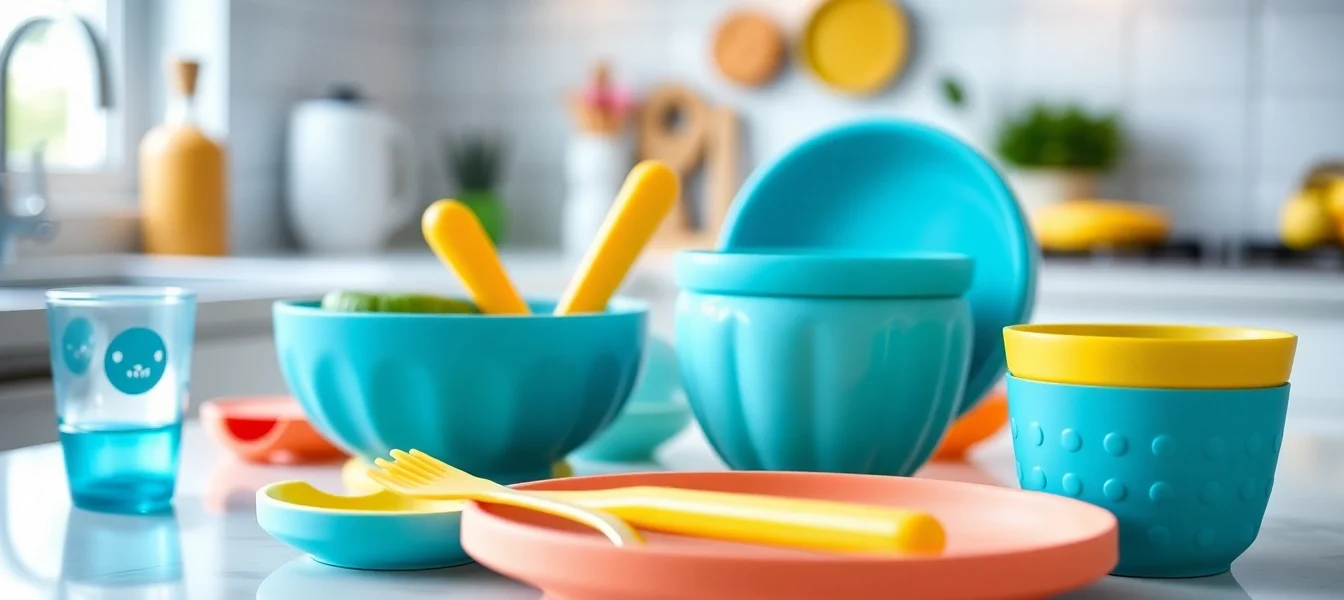Understanding the Benefits of Safe Silicone Baby Tableware
In recent years, parents and caregivers have become increasingly aware of the importance of choosing safe, durable, and functional tableware for their little ones. Among the various options available, Safe silicone baby tableware has emerged as a top choice due to its numerous benefits that promote both safety and developmental growth. This comprehensive guide explores why silicone is ideal for baby feeding, its key features, and how it supports early childhood development, ensuring parents are equipped to make informed decisions.
Why Choose Silicone for Baby Tableware?
Silicone has revolutionized baby feeding accessories owing to its unique combination of safety, flexibility, and ease of use. Unlike traditional plastic or glass, silicone is inherently resilient, non-toxic, and flexible, making it an excellent material choice for children’s tableware. It can withstand high temperatures—ideal for cleaning and sterilization—without degrading, thus maintaining hygiene standards. Moreover, silicone’s lightweight nature makes it easy for small hands to grasp and manipulate, encouraging independence during meals.
Italian brands like Bèbeboom emphasize the use of high-quality, certified silicone to ensure safety and durability, aligning with Italy’s rich tradition of gastronomic excellence and meticulous safety standards. This focus on Italian-made, certifiably safe materials ensures that parents can confidently trust the products that accompany their child’s growth and development.
Safety Certifications and Material Quality
When selecting silicone tableware for babies, safety certifications are paramount. Certified Safe silicone must be free from harmful substances such as BPA, phthalates, lead, and other toxins that can leach into food or water. Top brands adhere to stringent European and international standards, ensuring their products meet or exceed safety directives.
In Italy, regulatory oversight guarantees that all silicone products used for infants are rigorously tested for chemical safety and biocompatibility. Certifications such as Food Contact Grade and compliance with EU Regulation 10/2011 ensure that silicone is suitable for repeated contact with food and beverages. This level of certification guarantees peace of mind for parents, knowing that what touches their child’s mouth has been thoroughly tested for safety.
Resilience and Durability in Daily Use
One of the main advantages of silicone tableware is its extraordinary durability. It is resistant to breaking, chipping, or cracking—common issues with glass or ceramic products—making it especially suitable for active children. Silicone’s flexibility allows it to endure drops and rough handling without damage, extending the lifespan of tableware items. Additionally, it can withstand both hot and cold temperatures, facilitating safe use in microwaves, ovens, freezers, and dishwashers, simplifying busy parents’ routine.
This resilience ensures that the tableware remains in pristine condition, reduces replacement costs, and minimizes the risk of injury from broken fragments—key benefits for maintaining a safe eating environment for children.
Key Features of Safe Silicone Baby Tableware
Non-Toxic, BPA-Free and Phthalate-Free Materials
The cornerstone of safe silicone tableware is its composition. Leading brands like Bèbeboom guarantee that all products are made from non-toxic, BPA-free, and phthalate-free silicone, ensuring that no harmful chemicals contaminate food or liquids. These materials are not only safer for babies but also environmentally friendly, as they are recyclable and do not release toxic residues over time.
Design Aspects Promoting Child Independence
Designed explicitly for small hands, silicone tableware features ergonomic shapes, easy-to-grip edges, and vibrant colors that stimulate visual interest. Divided plates, bowls with suction bases, and utensils crafted with rounded, non-sharp edges foster self-feeding skills and encourage children to learn independently. These design features help build confidence during meal times, laying the foundation for lifelong healthy eating habits.
Ease of Cleaning and Maintenance
Parents appreciate the ease of cleaning that silicone offers. Unlike porous materials, silicone does not stain or retain odors, making it simple to clean thoroughly with soap and water or in the dishwasher. Its non-porous surface prevents bacterial buildup, promoting a hygienic eating environment for children, especially important during the early phases of feeding where attention to cleanliness is crucial.
Impact of Silicone Tableware on Child Development
Supporting Fine Motor Skills and Self-Feeding
The use of silicone feeding utensils and plates encourages children to engage actively in their mealtime routine. Handles designed for small hands facilitate grip development, helping improve fine motor skills. Self-feeding practices foster hand-eye coordination, independence, and confidence, all vital for developmental milestones.
Encouraging Exploration and Sensory Learning
Silicone’s soft texture and flexible properties support sensory exploration. Children can squish, squeeze, and manipulate the tableware, enhancing tactile awareness. Bright colors and varied shapes further stimulate visual and sensory experiences, reinforcing learning through play and exploration during meals.
Foster Self-Confidence During Meal Times
By providing tools that are safe, functional, and appealing, silicone tableware helps children develop confidence in self-feeding. As they learn to grasp, scoop, and eat independently, their self-esteem grows, establishing a positive association with eating routines and paving the way for healthier long-term eating behaviors.
Tips for Parents on Choosing the Best Silicone Baby Tableware
Identifying Certified and Safe Products
Always verify that the silicone products are certified safe, made from food-grade silicone, and free from BPA, phthalates, and other toxins. Trusted brands like Bèbeboom provide transparent information regarding certification and safety standards, making it easier for parents to select trustworthy products.
Matching Design and Functionality with Baby’s Needs
Choose tableware with features tailored to your child’s developmental stage—divided plates for separating foods, suction bases to prevent spills, ergonomic utensils for easy gripping, and vibrant colors to stimulate interest. Adapting the tableware to your child’s preferences encourages spontaneous use and positive mealtime experiences.
Integrating Silicone Tableware into Daily Routines
Incorporate silicone tableware gradually into mealtimes, making it a natural part of your child’s daily routine. Consistent use helps cultivate independence and good eating habits. Clean the items thoroughly after each use to maintain hygiene and safety, and involve your child in selecting their favorite colors or shapes to foster engagement.
Future Trends and Innovations in Baby Tableware
Smart Features and Interactive Designs
Emerging trends include the integration of smart technology, such as temperature-sensitive indicators, or interactive designs that engage children during mealtime. These innovations aim to make eating enjoyable while providing useful feedback to parents regarding food temperature or portion sizes.
Sustainable Materials and Eco-Friendly Options
Environmental consciousness influences the industry, leading to the development of biodegradable, organic silicone, or recycled materials that minimize ecological impact. Companies are exploring eco-friendly packaging and manufacturing processes, aligning product development with sustainable values.
Customization and Personalization Opportunities
Personalized tableware options, including customized colors, shapes, and engraved names, are becoming increasingly popular. Tailoring products to individual preferences not only appeals aesthetically but also strengthens a child’s emotional connection with their tableware, fostering pride and independence in self-feeding.




